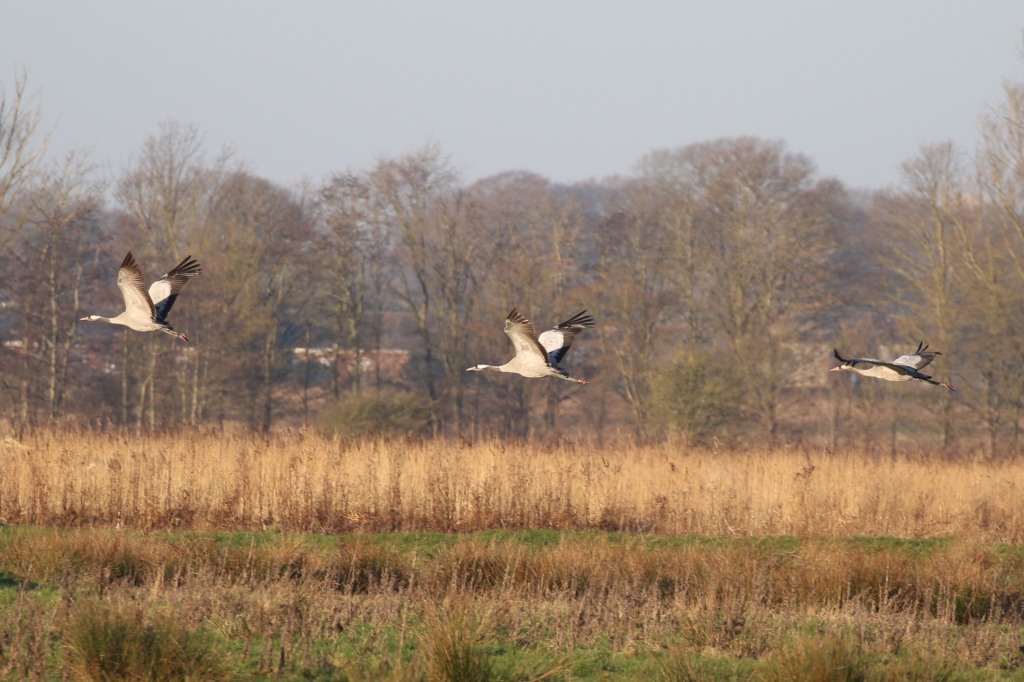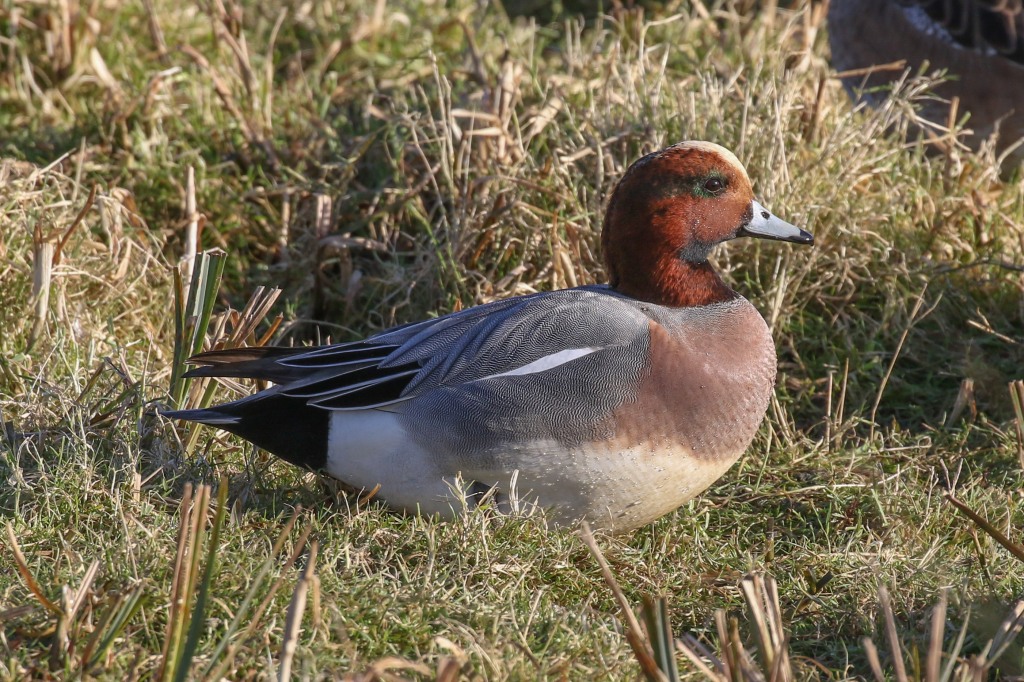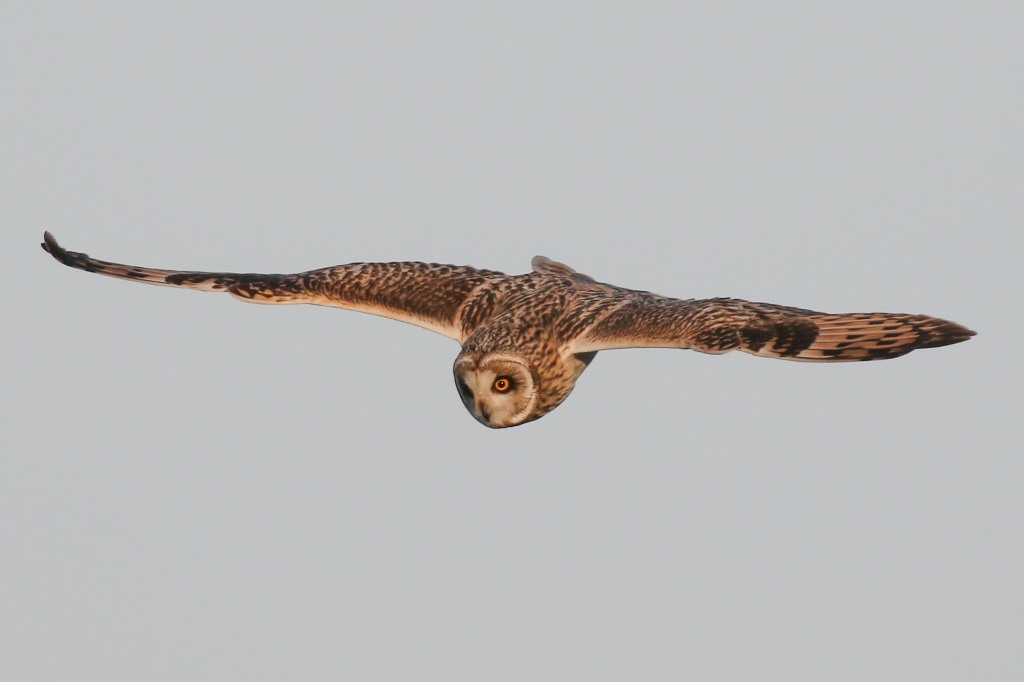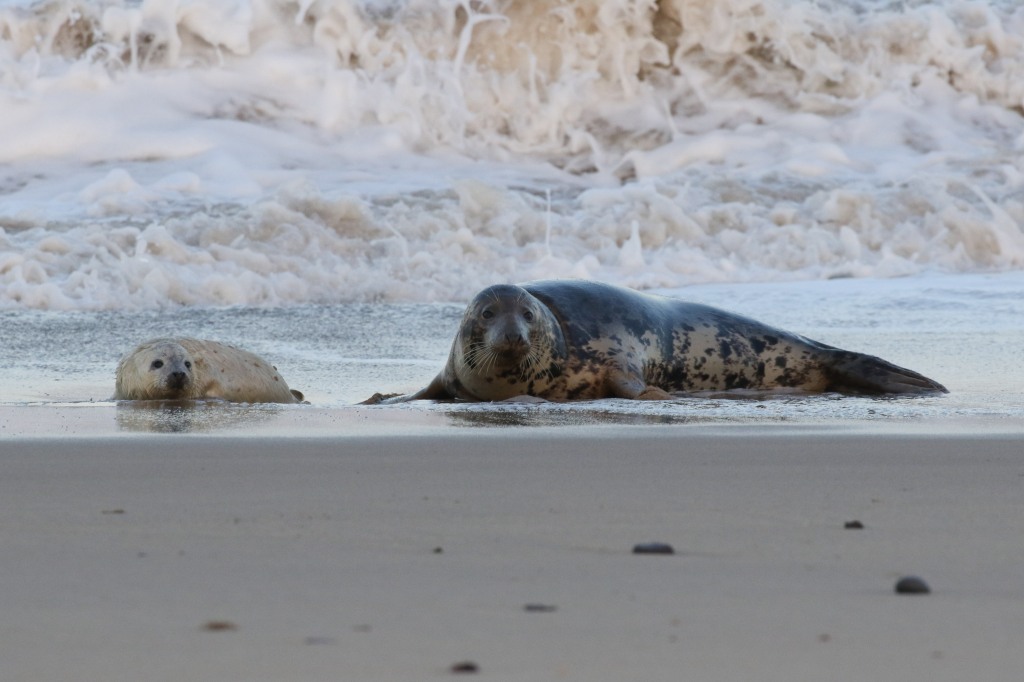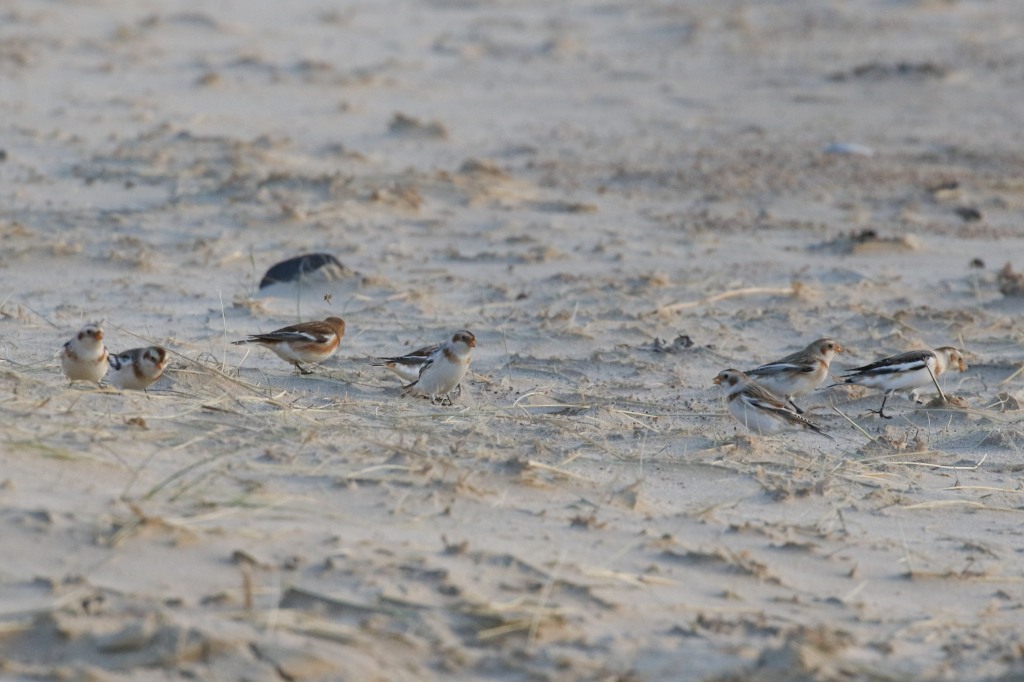A Group Day Tour down in the Broads. It was a cold night and a very frosty start, but with clear skies it was a gloriously crisp and sunny winter’s day. Great weather to be out birding.
As we met in the car park down in the Broads, a Great Tit was singing from across the frozen water opposite and a Chaffinch was singing from the other side of the road, a reminder that spring is on its way, even if it didn’t feel like it at the moment! Our first destination for the morning was the Trinity Broads and as we pulled up in the car park we could see that Ormesby Little Broad looked largely frozen. We crossed the road to the boardwalk overlooking Filby Broad and it was largely frozen too. A Mute Swan was out in the middle, trying to crack the ice ahead of it to get to the near side.

Thankfully there was a small patch of open water remaining, although it was over towards the far end and chock full of ducks. Not easy to find the more interesting ones in the throng of Coot, Tufted Ducks and Common Pochard. We quickly located three redhead Smew which were dozing on the edge of the open water, along with a few Goldeneye, and the drake Red-crested Pochard which was on a smaller and not so congested patch of water behind. A 1st winter drake (Greater) Scaup was in the middle of the ducks and trickier to see but the Ferruginous Duck was hardest of all to locate, as it was mostly asleep and kept disappearing into the melee.

There were lots of Shoveler out on the open water too, plus a few Gadwall. While we were scanning, a couple of Marsh Harriers patrolled the reeds around the edge of the Broad, at one point flying over the ducks in the middle which refused to budge. A Great White Egret flew over the trees at the back. As we walked back to the car park, the ivy covered trees by the road were full of Redwings and Blackbirds, which were so busy feeding they ignored us as we walked past.

The ditch under the trees was free of ice and several Mallards were enjoying it. We have seen Kingfisher in here before, so we walked up along the path towards Ormesby Little Broad, but quickly discovered someone else was walking ahead of us and anything on the ditch would have been disturbed. There were fewer birds then normal in the trees here too, although a Green Woodpecker laughed at us as we walked out onto the platform at the end.
The Broad here was also largely frozen, with a very small patch of open water populated by a few Tufted Ducks and a couple of Great Crested Grebes and Teal. It felt like we wouldn’t see much here. Then a Kingfisher flashed low over the ice and glowed electric blue as it turned and landed in the trees over the far side. We had just set up the scope on it when a large bird flew through our view. Bittern! We had a great view as it flew past and away across the Broad, disappearing into the reeds over the far side. What a bonus!

The Kingfisher flew off into the trees to our left, but then came out again and landed where it had been earlier, perched in full view. With fewer distractions, we could really enjoy it now. A little while later, the Bittern flew up again and dropped in further along. A Marsh Harrier circled over it at one point but didn’t flush it again. There were a couple of Grey Herons sunning themselves in the trees, along with a Common Buzzard and three Cormorants.
It was time to move on, so we walked back to the minibus and drove off to look for Common Cranes next. We pulled up in a layby overlooking some fields which they have been favouring in recent days and quickly spotted a small group feeding in the grass on the edge of some stubble. We got out and trained the scopes on them – eventually counting 13 together here, some smart adults with the red stripe on their crowns catching the sunlight and some family groups with browner juveniles still in tow.

Another five Cranes were just visible on the edge of a maize strip further back. As we stood and watched, some of the birds started bugling – what a wonderful sound! Then the thirteen started to walk out into the middle of the neighbouring field and took to the air in small groups, landing again further over. Great birds to watch here in the wonderful crisp winter sun. A big flock of Meadow Pipits came up out of the field next to us and when we could tear our attention away from the Crane spectacle we turned the scopes on a nearby hedge which was full of Yellowhammers and Reed Buntings.
Moving on, after a quick loo stop in Martham, we took the coast road up towards Horsey. We could see lots of Pink-footed Geese in one of the fields along the straight so stopped and got out for a closer look. One of the group noticed a lone Common Snipe on the front of a patch of water in the grass just beyond the reeds in front of us and when we looked we realised there were probably at least fifty of them scattered around the grass in front of the geese. There were a few Marsh Harriers over the reeds behind us, and then we noticed a slimmer harrier flying across too. A ringtail Hen Harrier, we got the scopes on it but it quickly disappeared behind the birch trees.

Continuing on round, some Fieldfares came up from a field by the road but disappeared back into some trees. The next field on held a huge flock of Golden Plover, which we admired from the minibus before they were all spooked and took to the air. Further still, we could see some shapes in a distant field, but with cars behind us we couldn’t easily stop. We pulled into the next gateway and looking back through the trees we could see they were more Cranes – 10 together here. Our Crane total was growing rapidly!
We cut inland next, for a quick circuit of Ludham Airfield. There had been some Whooper Swans here in the last week, but there was no sign of them today, although we did pass one field with around 60 Egyptian Geese! It was getting on time for lunch, so we carried on further south to Strumpshaw, where we could make use of the picnic tables overlooking the feeders. Two male Great Spotted Woodpeckers were chasing through the trees above the road as we parked. Lots of Blue Tits and Great Tits were coming in to the feeders, a Coal Tit appeared several times and a flock of Long-tailed Tits passed through at one point, but there was no sign of any Marsh Tits today and the trees around the Reception Hide were quieter than they sometimes can be. A Song Thrush was singing behind us.

After lunch, we had a quick look at Buckenham. There were not many geese out here today – a few Canada Geese and Greylags further over, and a lone goose along the edge by the railway line turned out to be just a single Pink-footed Goose when we it came out of the ditch. There were lots of Wigeon over the far side and a couple of Common Buzzards on the gateposts in the middle. A female Stonechat kept perching obligingly on the rushes in front of us. With time getting on, we decided against walking all the way to the river, and set off back towards Ludham.
Our final destination for the day was St Benet’s. The car park was the fullest we have seen it today, but perhaps not a surprise given the weather. We managed to find somewhere to park, and walked out and up onto the site of the old Abbey. It is a wonderful spot, on slightly raised ground, with a panoramic view of the surrounding marshes. A wonderful place just to be on a crisp winter’s afternoon.
We could see a large herd of swans in the distance and quickly got the scopes on them. As well as several Mute Swans, there were at least ten Bewick’s Swans too. We admired the squared off yellow on their bills. It wasn’t long before the first Barn Owl was out, followed by more, and at least we counted at least four, the minimum number we could see all simultaneously. Fantastic to watch them hunting in the low late sunshine, and a couple of times one landed in the hedge, where we could get a great view of it through the scope. They weren’t having it all to themselves though, as a couple of times we saw one of the local Kestrels go after them – the Kestrels are notorious thieves, and would happily steal a vole if one of the Barn Owls gave them a chance.

A stunning grey male Hen Harrier appeared, low over the marshes beyond. It landed on a fence post, where we could get in the scopes for a while, before it resumed quartering the marshes. A little later, we saw a ringtail Hen Harrier and kept seeing what was presumably the same bird repeatedly, although we couldn’t rule out that there weren’t actually two. We picked up a family of four Common Cranes way off on the far side of the marshes – even at that distance, we could hear them bugling at times. That took our total to a massive 32 different Cranes for the day – a significant proportion of the only 200+ total UK population!
The Short-eared Owls were curiously inactive this evening, particularly considering how active the Barn Owls were, but when a Marsh Harrier flew in low over the marshes, suddenly a Short-eared Owl appeared with it. The two of them circled up high above the hedge, before the Marsh Harrier drifted off and the Short-eared Owl dropped back down to the marshes out of view. We walked down to the gate at the far end, but couldn’t find it again. What was presumably the same ringtail Hen Harrier was distantly out over the marshes and one of the Barn Owls was hunting round and round over the grass and reeds in front of us. We had nice views of a Red Fox out on the marshes too.

As we walked back up to the top of the rise, by the remains of the old Abbey, several long lines of Cormorants were flying past, heading inland to roost. One of the Barn Owls was still hunting round the margin of the Abbey grounds. The sun was going down away to the west – what a view! It was unfortunately time to head for home.















































